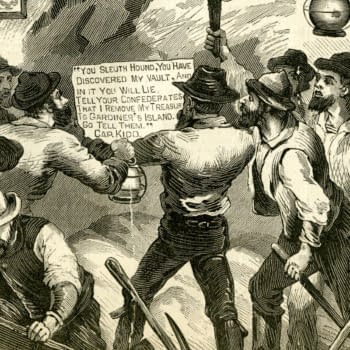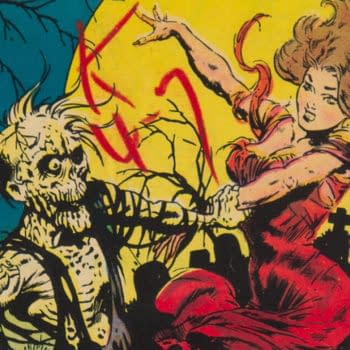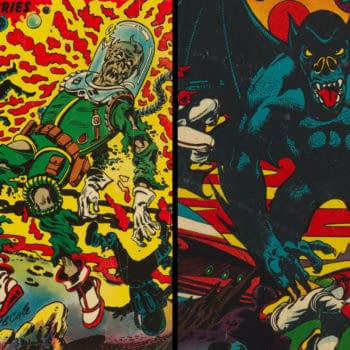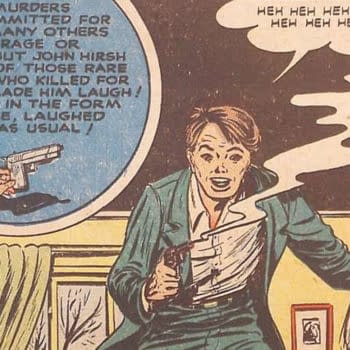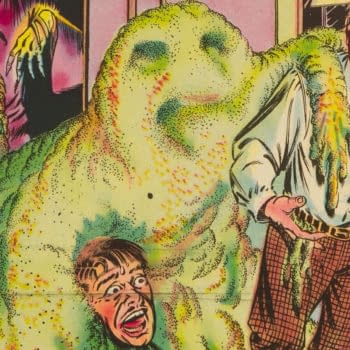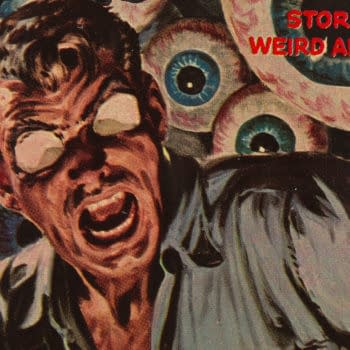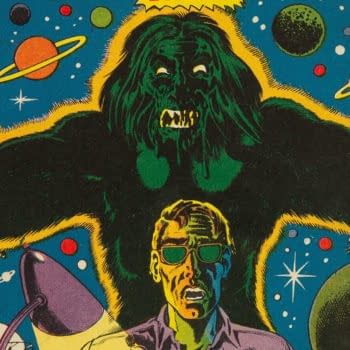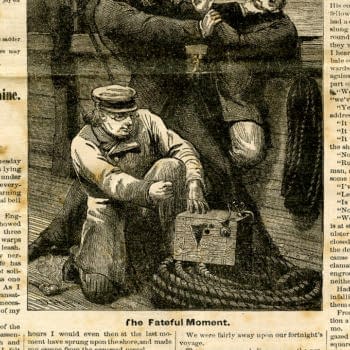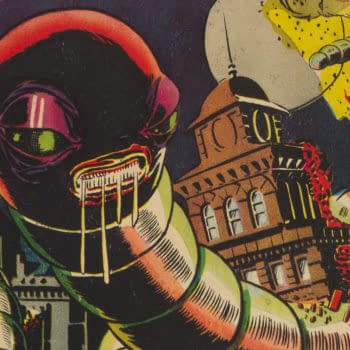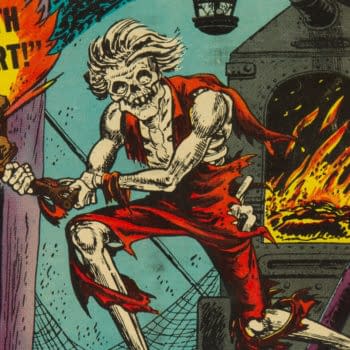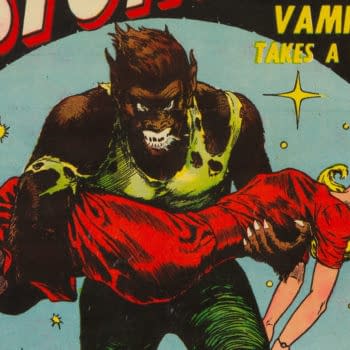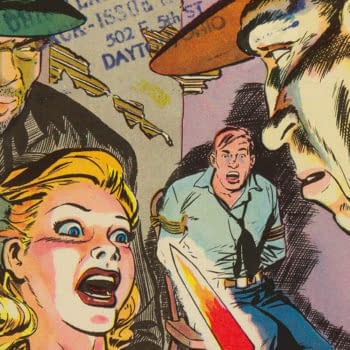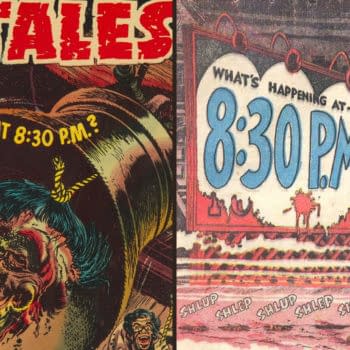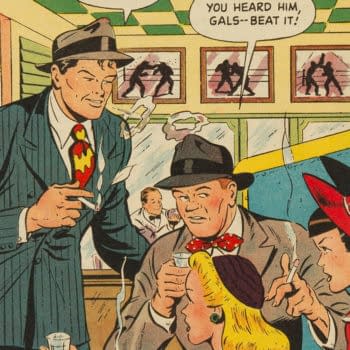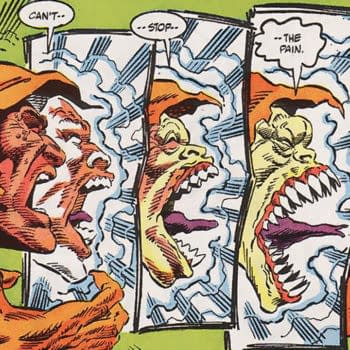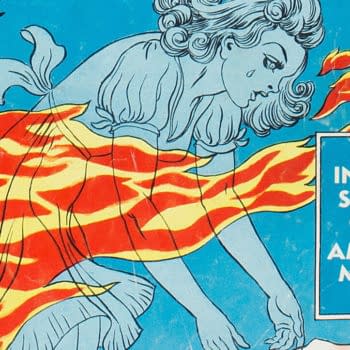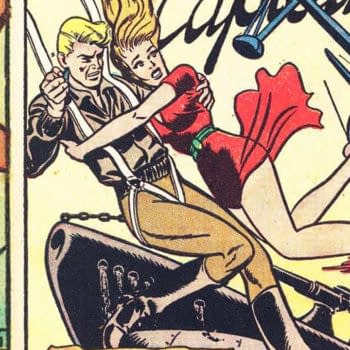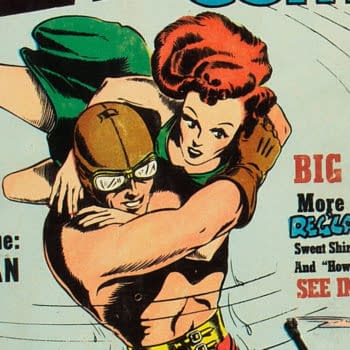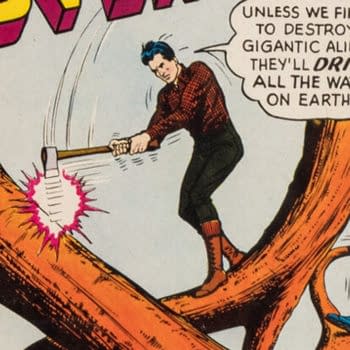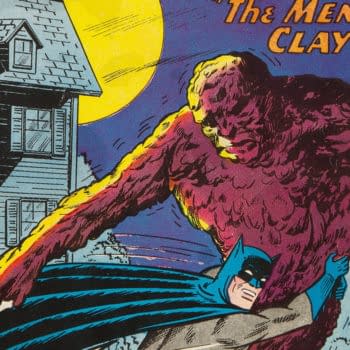One of the most popular Silver Age Marvel keys of the past decade, Tales of Suspense #39 featuring Iron Man has some fascinating inspirations.
Mark Seifert Archives
Family Story Paper #688 includes a blurb that indicates that the Trade Waiting concept was already a thing in 1886.
Gus Ricca's incredible cover of Dynamic Comics #11 for publisher Harry A. Chesler has an equally fascinating story behind it.
Sid Check and Frank Frazetta's cover for Beware #10 might be one of the most obscure comic book covers Frazetta ever had a hand in.
L.B. Cole's memorable cover for Jay Disbroy's interior story in Ghostly Weird Stories #122 is a wild example of Cole science fiction.
D.S. Publishing's Exposed True Crime Cases got off to a cold-blooded start in the first two issues of the Pre-Code era series.
Beware Terror Tales #4 has a cover by Spectre co-creator Bernard Baily that practically begs you to read the story behind it.
As his Senate testimony shows, Dark Mysteries' William K. Friedman knew what buttons to push when it came to comic book horror.
The cover of 1952's Startling Terror Tales #11 is a prime example of L.B. Cole's cover art philosophy on his Star Publications titles.
Legendary painter Norman Saunders is remembered for his pulp covers, but his Worlds of Fear #10 work is one of his best-known comic covers.
Startling Terror Tales #13 features a boldly lurid cover by L.B. Cole for Jay Disbrow's interior story "Love from a Gorgon".
J.F. Bardsley's fictional story "At Sea With an Infernal Machine" in Saturday Evening Post Volume 61 #23 of 1881 was based on pivotal history
One of the most famous Steve Ditko covers of the 1950s, Charlton's The Thing #15 has a wonderfully weird interior story to match.
Marvel/Atlas' Journey into Mystery #15 is another mid-1950s example of radiation-transformed mutants in comic books.
Blurb to the contrary, Harry Anderson's cover for Astonishing #32 represents the interior story "The Werewolf Takes a Wife" by Paul Reinman.
Fawcett, the publisher best known for Captain Marvel produced one of the most notorious crime comic issues of the 1950s era.
In which the elusive Liberty Comics #12 gives us a hook into understanding the wheeling and dealing of the comic book industry of its era.
Witches Tales #25 (Harvey, 1954) is a classic among two different groups of people for two different reasons that involve the same story
Pay-Off is one of a small line of little-known but memorable crime comic book titles from magazine publisher D.S. Publishing.
Clover Press and Yoe! Books are teaming up for Popeye Variations, a 10" x 10" hardcover book featuring over 75 artists.
Jason Philip Macendale Jr. aka the Hobgoblin split with his demon in Web of Spider-Man #86, resulting in the even weirder Demogoblin.
Famous Funnies #81 features the comic book debut of early female comic superhero Invisible Scarlet O'Neil, with cover by H.G. Peter.
The War That Time Forgot debuted in Star Spangled War Stories #90, and the ongoing dinosaurs vs soldiers battles quickly took over the title.
While Tigra's Marvel Chillers series didn't last long, the character subsequently became a regular guest in Fantastic Four and beyond.
In Wings Comics #85, Captain Wings must prevent a military superplane from falling into the wrong hands to prevent the outbreak of WW III.
Eastern Color's Heroic Comics series debuted underappreciated Bill Everett superhero Hydroman and Tarpé Mills' Purple Zombie.
Strange Adventures lived up to its name during its run 1950-1973, and "The Space-Roots of Evil" is an excellent example of the series.
With the power of Static Electricity at his fingertips, Spark Man served as an equalizer against evil in his Sparkler Comics adventures.
In the Silver Age, Bill Finger and Sheldon Moldoff turned Clayface from a throwaway character into a Batman rogue's gallery staple.
When the God of War got humanity to turn its back on the institutions of knowledge on Earth, he forgot about Mysta of the Moon.



